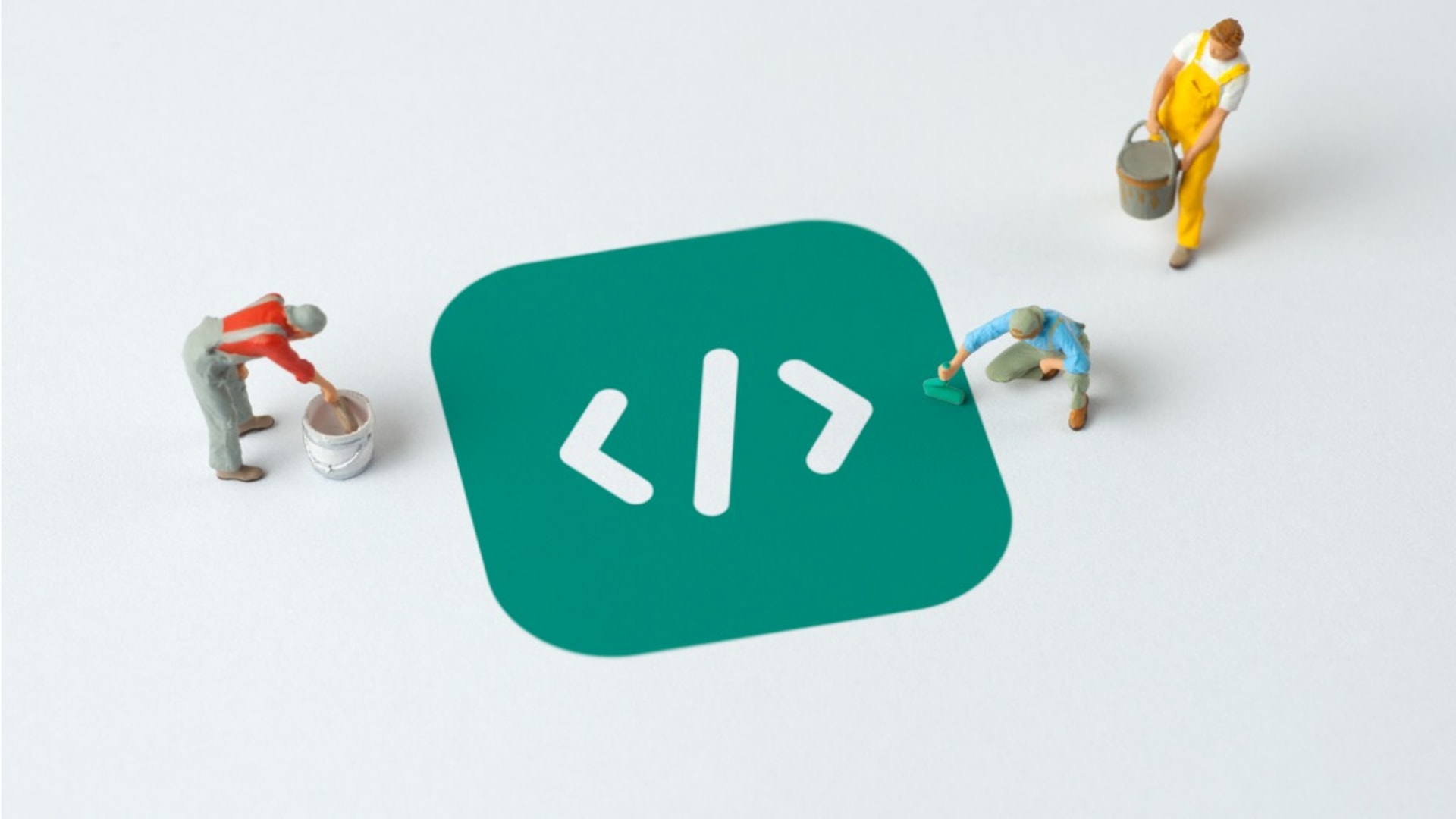Imagine that you sit at your workstation, coffee in hand; you open an Excel worksheet and start working some numbers for a report that has to be ready by the end of the day. You remember about a new algorithm that you recently read about that is perfect for the kind of analysis you have in mind. One problem, though—Excel doesn’t have a function for that algorithm.
You could code by hand, sure, or you could leverage SaaS services, and open your Bing assistant and ask if it could edit Excel’s source code to add a new functionality. After a few seconds searching the web and a few minutes writing the new code and compiling everything, you have your new Excel with a new function just for you. Welcome to the age of malleable software.
If that example sounds like something out of a sci-fi novel, it’s because it is. The number of challenges involved in making something like that work are gigantic but not insurmountable. And while we are decades away from seeing something so sophisticated, I bet we will start seeing some really interesting AI implementations regarding software customization in the short term.
The idea of customized software is nothing new, be it changing aesthetics, or tuning/modding the software to fit our needs, or creating an accessibility-first interface. But that’s like changing the color and seats of your car. In the end, you are just adapting for comfort, but the underlying chassis and engine remain unchanged.
The Traditional Software Paradigm
Almost every modern software is based on a single supposition: “designers know best.” This, in and of itself, is not a bad thing. After all, we have spent trillions of dollars on research to understand the best way to develop software for our users. There are hundreds, if not thousands, of books and workshops on UI, UX, GUI, and other topics related to user experience.
Let’s take a moment to talk about the most popular frameworks for front-end development. Angular and React, both supported by massive corporations (Google and Meta), both are built from the ground up to provide incredible flexibility for developers, and with enough creativity, either can allow you to make a customized and powerful Web App.
Except, like every other framework on the face of the earth, Angular and React are both opinionated and the more you deviate from the framework’s standard, the more headaches you are inviting into your life. This is especially relevant in Angular development. Most developers will opt for the path of least resistance, molding their vision to how the framework expects you to build the app. Once again, not a bad thing by itself, considering how much thought and planning has gone into building these frameworks.
Now, add another time-tested solution to your tech stack, something like Bootstrap or Bulma, and you have a beautiful and serviceable webpage that looks just like every other Web App on the market. On one hand, that’s cool because users will already know what to expect. Once you’ve seen a navBar you’ve seen them all. On the other hand, I hope you have a damn good idea powering your product because your aesthetics ain’t catching anyone’s attention.
I don’t want to come off as some developer with moral superiority—quite the opposite actually. I will be the first one to admit that I’m part of the problem. It’s easy to fall into the “the developer knows best” mentality. Here are some of the reasons why:
- Sunken cost fallacy: Most of us have spent decades and thousands of dollars studying and learning how to code, build apps, and create user experiences. At this point, we subconsciously defend our position of power by telling ourselves that we know best.
- One-size-fits-all approach: As the saying goes, you can’t please everybody, so what do you do when you are trying to reach the broadest possible audience? You go for the norm, the most common type of service that’s going to please the most people. Unfortunately, that also means not considering the outliers.
- Trend chasing: When we see someone’s success, it’s the most common thing in the world to want a piece of that pie. Just look at Hollywood and how Marvel forced everyone to try to jumpstart their own cinematic universe. Trends are post signs of where the culture is moving, and to be quite honest, developers and investors alike are as susceptible to FOMO (fear of missing out) as any regular user.
It’s quite easy, actually. We have access to the data, we read and listen to key industry insights, and we see how successful products do it. It’s obvious that we are the ones who really know how it’s done. And when IT gets swarmed with tickets because people don’t understand our systems? That’s just users being users.
And that’s perhaps the biggest culprit behind this mentality of “I know best”—the toxic ideas that we developers have towards users. Yes, we do have a better picture of a piece of software; yes, we understand the limitations; yes, we have to set expectations to avoid requirements that are one step from “turn lead into gold, please.” But perspective is everything, and sometimes we are so inside our own that we fail to see how the outsider view can change our paradigms for the better.
The Alternative: Malleable Software
Malleable software is a concept coined by Philip Tchernavskij in his 2019 Ph.D. thesis. This approach aims to increase the power of existing adaptation behaviors by allowing users to pull apart and re-combine their interface. Malleable software involves interfaces that allow users to rearrange, add, or remove elements at the granularity of individual UI elements.
Additionally, malleable software could, in theory, serve as a base philosophy to build applications that scale and change according to the user’s desires.
As any developer or anyone who’s had to hire a software developer for a big project can tell you, software has a tendency to become bloated as time goes on. Take a look at Twitter. What once started as a simple app to share your ideas in 120 characters or less grew into an unwieldy hydra—video sharing, Instagram-like stories, spaces, blue checkmarks, and gold checkmarks. Some of these functions remain up to this day, while others have come and gone, like the latest Google product.
While bloat isn’t the same thing as growth, these two concepts are deeply correlated. Excel wasn’t the monster it is today in its beginnings, but as we added more and more functionality, the software grew in complexity, and we ended up with the mammoth we have today.
Now, this is not a case of not knowing when to stop. To stay competitive in today’s market, companies are trying to provide one solution to rule them all (pardon the Lord of the Rings pun), which is extraordinary for people who are already part of the community but an absolute hell for newcomers.
Let’s be honest. The first time you opened an Excel spreadsheet, odds are you felt overwhelmed with the number of options, and only after hours and hours of suffering and looking up tutorials did you figure out how to do something that would have taken a few minutes if you only knew where to look.
As a former psychologist and data scientist, I was a big user of IBM’s SPSS, a fantastic statistics software that has every analytics tool you could imagine. So why did I change to Python and R? First, because I like my solutions open source, and second, because I wanted to have more freedom to link my data analysis with other functionalities.
But third, and most importantly, because I didn’t want to navigate four menus to get the means of some of my variables. With Python, I only need a few lines of code that I can reuse to my heart’s content. Sometimes I only need a quick descriptive analysis without the fuzz of having to open a heavy application.
That’s one use case for malleable software—being able to change and adapt the interface to fit my needs as a data analyst. But there is more. In the last few years, there’s been a growing trend of exploring how users could write their own applications, adding functionalities, and scaling them as they see fit. That’s also part of the malleable philosophy.
I know biologists, sociologists, psychologists, and mathematicians, and we all have one thing in common: We all need software to get our work done. But the kind of tests I run are different from what a biologist or a sociologist needs. So, what if instead of having one software with all the tools, we have a bare-bones software that we could add functionalities to as the need arises?
As Kay wrote in 1984, “We now want to edit our tools as we have previously edited our documents.” It’s simple. Instead of having “new Facebook” or “old Facebook,” we could build “my Facebook experience,” and with the connectivity we have today, users could share their templates, in the same way, the community of beer homebrewers grows as people share their recipes.
Of course, there is the giant elephant in the room: How do we do it? This is where the digital literacy breach rears its ugly head. Customization means that at some point, we have to give instructions to a computer—coordinates, conditionals—so how can we reach this philosopher stone of software design? Ironically, the answer might just be where we least expect it.
Are Video Games Malleable Software?
I admit it, I’m a gamer, and I would take any opportunity to talk about games, but in this case it’s a fantastic example. For decades, video games have provided the tools for users to tinker and play around, giving rise to the so called modding community. While this has somehow changed in the last couple of decades, customizability is still ingrained in gaming’s DNA.
Let me regale you with the story of one of the biggest franchises in video game history, League of Legends, a free-to-play MOBA where teams of 5 players compete against one another, trying to destroy the opponents’ base. Today League of Legends is a multimedia franchise worth millions.
From humble beginnings, the idea behind the game, that is League of Legends started as a personalized map for the game Warcraft 3. The community took the modding tools for the game and crafted a new and unique experience that was quite different from the original game and which created a whole new genre.
Part of World of Warcraft’s popularity (the king of MMORPGs with a lifespan of over 15 years) is just how customizable it is. With a few Lua skills, you can build and change the interface in any way you like. Some of the add-ons created by the community have been so disruptive that Blizzard (the company behind the game) was forced to change their APIs and ban some of the tools.
And even without modding, most games have options to change the layout of the GUI, how the game controls, and how the game looks. Do you want to have a 120 FPS experience? Or would you rather play at 30 FPS with realistic graphics? That’s up to you, the player, to choose what graphical options you want to turn on and off to achieve your optimal experience.
So, here are two lessons to learn: First, we can create options and sliders as well as flexible graphical interfaces that our users can tinker with within certain constraints. Additionally, we can create user-friendly APIs for the community to play around with and build better malleable software.
And then, there is the third option: AI. As AI gets better, a user might not even need to know how to code to create their perfect interface or add a functionality to their software. Just pass off the instruction to a ChatGPT-like interface and let AI do its magic.
What Does It All Mean for SaaS?
The concept of malleable software, as conceived by Philip Tchernavskij, could have wide-reaching implications for software development, including the way we approach Software as a Service (SaaS) and SaaS outsourcing. At its core, malleable software is about empowering users to modify and adapt their interfaces, altering, adding, or removing elements as needed. By extrapolating this philosophy, we can envision a future where applications are designed to evolve and scale in accordance with user desires and requirements. But how could this potentially disrupt the current SaaS model?
Personalized User Experience
One of the primary ways malleable software could disrupt SaaS is by fundamentally reshaping the user experience. Today, many SaaS applications are essentially one-size-fits-all solutions. They have a set of features and functions, and users must adapt their workflows and processes to the constraints of the software. However, with malleable software, the power dynamic shifts. Users can modify and mold the software to suit their unique needs and preferences. This could lead to a much more personalized user experience, resulting in increased user satisfaction and retention.
Scalability and Adaptability
SaaS companies often face challenges with SaaS scalability as they add more features and capabilities to their software to meet diverse customer needs. This often results in complex and bloated software that can be difficult to navigate and understand, particularly for new users. Malleable software, however, could provide a solution to this issue by allowing users to add or remove features based on their specific requirements. This means that the software could scale and adapt in sync with the users’ needs, reducing unnecessary complexity and bloat.
Collaboration and Community
Malleable software could also foster a stronger sense of community among users. As users customize and adapt their software, they might be inclined to share their “templates” or customizations with others. This could result in a collaborative ecosystem where users share, borrow, and build upon each other’s work. Such an ecosystem could drive innovation and user engagement, resulting in a richer, more dynamic SaaS environment.
Democratization of Development
Currently, the development of new features or modifications to SaaS applications is primarily in the hands of the software provider. However, malleable software could democratize this process by putting the tools for modification and customization directly into the hands of the users. This aligns with the growing trend of citizen development, where non-technical users can create or modify applications using low-code or no-code platforms.
Challenges and Considerations
While malleable software presents many exciting opportunities, it also introduces some challenges and considerations. For instance, there could be potential issues around security, quality control, and user support. If users are modifying and customizing the software themselves, it could become difficult for the provider to ensure that the software remains secure and functions correctly. Furthermore, providing user support could become more complex if each user is working with a unique, customized version of the software.
Moreover, the digital literacy gap could pose a challenge. While some users might eagerly embrace the opportunity to modify and customize their software, others might find it daunting or overwhelming. Therefore, it will be crucial for SaaS providers to develop intuitive, user-friendly tools and resources to support users in this process.
In conclusion, the concept of malleable software could bring about a significant shift in the SaaS landscape. By putting more control in the hands of users, it could lead to a more personalized and flexible user experience, foster collaboration and community, and democratize the development process. However, these benefits must be balanced against potential challenges around security, quality control, user support, and digital literacy.







